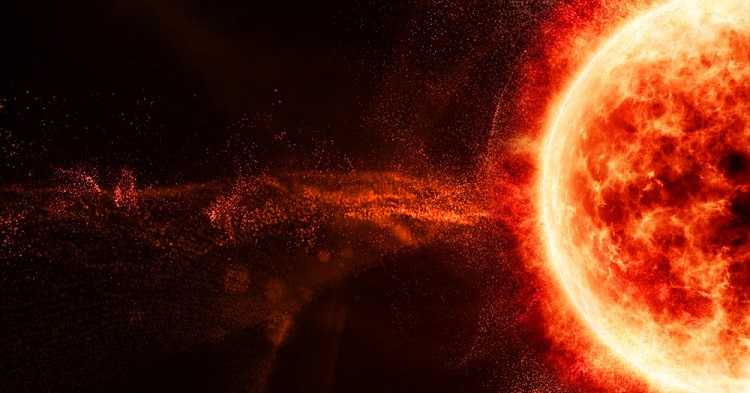Invisible to the naked eye, the sun, a colossal nuclear powerhouse, is in a state of constant turmoil. It traverses the vast expanse of space, and in its tempestuous journey, it occasionally unleashes furious bursts of energy, sometimes more intense and other times less so. These eruptions, often accompanied by menacing sunspots, emit scorching heat and radiation, threatening our very way of life, particularly our reliance on the internet.
This phenomenon, known as Coronal Mass Ejection (CME), poses a grave risk to our fragile electronics, many of which are both costly and challenging to replace, especially when it comes to critical infrastructure. CMEs generate an electric charge capable of frying these delicate devices, and if one were to occur on a large enough scale, it could potentially cripple the internet as we know it.
Enter Professor Peter Becker from George Mason University, who recently shared his concerns in a compelling interview with FOX Weather. “The internet has thrived during a relatively calm period of solar activity,” he remarked. “But now, as we find ourselves entering a more active solar phase, we face a unique convergence of increased solar activity, our profound dependence on the internet, and its pivotal role in the global economy.”
Professor Becker elucidated the intricate dance of solar activity. “We observe solar flares as the sun momentarily brightens, emitting radiation – think of it as a muzzle flash,” he explained. “But the real cannon shot comes with the coronal mass ejection, a colossal release of superheated matter. While CMEs may head in random directions through space, we can predict when they’re headed towards Earth, providing us with roughly 18 to 24 hours of advance notice before their particles disrupt our magnetic field.”
What’s even more alarming, Professor Becker cautioned, is that these solar disruptions can impact electronics considered safe under ordinary circumstances. “People often assume their grounded computers are immune to such events,” he stated. “However, during a solar storm, inductive currents can inadvertently flow into the Earth’s surface, potentially causing the very damage we sought to prevent.”
Drawing parallels to the solar event of 1859, which disrupted telegraph wires and led to operators receiving electric shocks, Becker illustrated the gravity of our current situation. “Back then, sparks flew from telegraph lines, and operators were electrocuted due to the unexpected high voltage,” he recalled. “The magnetic field variations effectively transformed the telegraph wires into generators of electrical currents.”
Comparing this historical incident to our modern world, Professor Becker emphasized the severity and prolonged consequences of a solar-induced catastrophe. “Imagine overlaying that scenario on today’s internet, replete with its delicate electronics,” he said. “We’re looking at a potential system-wide meltdown that could take weeks, if not months, to repair. It’s not just about communication; it’s an economic disruption of colossal proportions.”
Nevertheless, Professor Becker remains hopeful and proposes viable solutions to mitigate this looming threat. “In the event of a warning, every minute counts,” he urged. “We can put satellites into safe mode, disconnect transformers from the grid to prevent frying, and undertake long-term efforts to fortify the internet. Of course, this comes with a hefty price tag, akin to purchasing an insurance policy that may never be used, but the investment is essential to safeguard our digital lifeline.”
In a world that has grown increasingly reliant on the internet’s connectivity, Professor Becker’s warnings serve as a sobering reminder of the fragility of our digital infrastructure. As we continue to advance, it is imperative that we also prepare for the unexpected, ensuring that the sun’s fiery tantrums do not extinguish our digital flames.
